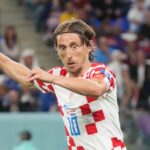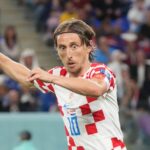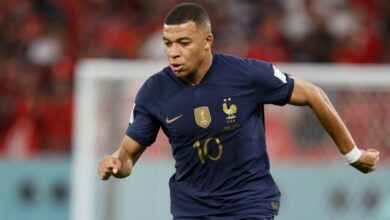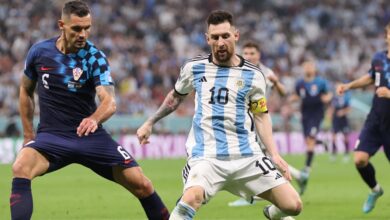Luka Modric, who led Croatia in their most recent World Cup,
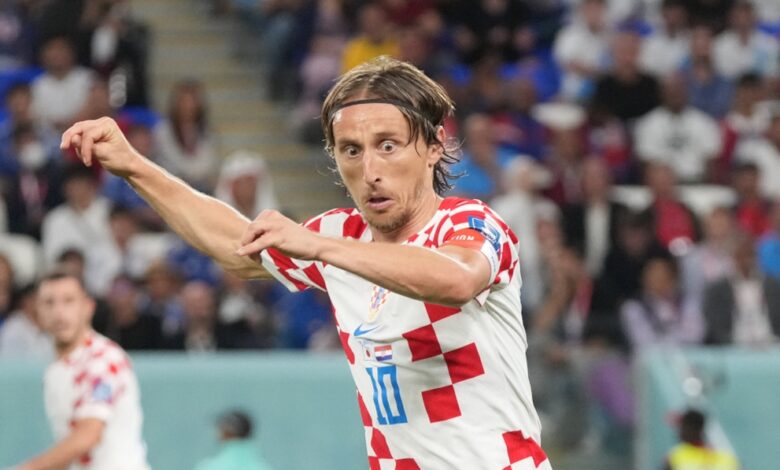
Luka Modric predicted that this World Cup would likely be his final major competition before retiring, and the Croatian team has once again made a deep run.
When the veteran midfielder’s team plays Brazil in the quarterfinals on Friday, they will face their hardest test to date.
The five-time champions’ outstanding first-half performance in their 4-1 triumph over South Korea in the round of 16 served as a warning to their fellow title contenders.
The Selecao will likely have a significantly tougher test against Croatia, the 2018 World Cup champions, since seven of their last eight matches in big tournament knockout matches have required extra time.
The team’s lifeblood, Modric, is still on the field, and coach Zlatko Dalic has stated that he anticipates the 37-year-old to participate in the Nations League finals in 2019.
But 20 years after the previous World Cup, the Real Madrid midfielder can not see himself participating.
“I’m aware that I’m of a certain age and that this is my last competition in the Croatian national team,” he told Fifa before the tournament.
While still giving his all in the middle of the field, Modric was visibly waning when he was taken off during Croatia’s win over Japan on penalties in extra time of the last-16 match.
However, the Balkan nation will be depending on him to dig deep once more as he seeks to recapture the form that propelled Croatia to the Moscow final in 2018, where they fell to France 4-2.
“When you see people like Luka Modric running and dying on the pitch, it gives us younger players extra energy to run,” said full-back Josip Juranovic.o
After a 16-year international career in which he has made 159 appearances, Modric is revered in his native country.
Five Champions League titles with Real Madrid are in his trophy cabinet.
HUMBLE BEGINNINGS
In 2018, Modric won both the World Cup player of the tournament and the Ballon d’Or, ending the 10-year reign of Lionel Messi and Cristiano Ronaldo.
Between 1991 and 1995, when Croatia was fighting for independence, Modric’s hometown of Zadar and the area around it were heavily shelled by Serb forces.
Those close to Modric claim that those experiences helped to mold his character and gave him mental toughness.
“It happened a million times that we were going to training as the shells were falling, and we were running to shelters,” said childhood friend Marijan Buljat, who trained and played with Modric while growing up.
“It is certainly one of the factors that contributed… that drove him to become one of the best in the world.”
Luka was named after Modric’s grandpa, who was killed by Serb forces, and his family escaped to Zadar, 40 kilometers (25 miles) away.
“I’m sad that he (grandfather) didn’t get to see at least something of what I’ve achieved,” Modric told Fifa.
Modric, who was born in 1985, started his footballing journey in Zadar, where he first attracted attention.
“I heard about a little hyperactive boy constantly playing with a football in the corridor of a refugee hotel, even going to sleep with it,” said Josip Bajlo, who was then coach at NK Zadar.
Modric moved to Dinamo Zagreb from Zadar when he was a teenager. In 2008, he joined Premier League club Tottenham, where he stayed for four years before relocating to Spain.
In the hinterland of the coastal town of Zadar, trees are now growing inside the roofless ruin of his grandparents’ home.
Mines – Keep out!” warns a sign next to the house, lying on a mountain road winding through the Modrici hamlet.
On Friday, its most famous son will be hoping to make one last push for World Cup victory.
For more update, always visit dailygam.com
